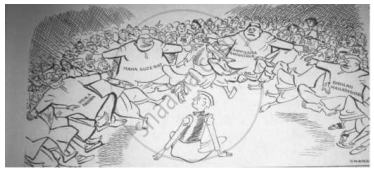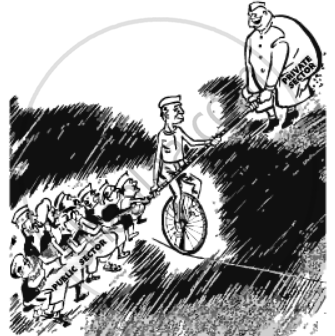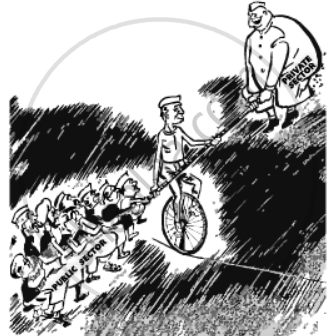Advertisements
Advertisements
प्रश्न
Which of the following ideas did not form part of the early phase of India’s development policy ?
विकल्प
Planning
Liberalisation
Cooperative farming
Self sufficiency
उत्तर
Liberalisation
APPEARS IN
संबंधित प्रश्न
Match the following :
| (a) Charan Singh | (i) Industrialization |
| (b) PC Mahalanobis | (ii) Zoning |
| (c) Bihar Famine | (iii) farmers |
| (d) Verghese Kurien | (iv) Milk Cooperatives |
What were the major differences in the approach towards development at the time of Independence? Has the debate been resolved?
The Socialist model of development was related to ______.
Tribals of Odisha fear their displacement due to the extraction of which mineral?
In India, planning was conceived as the main instrument of ______.
NITI AYOG was established on ______.
Consider these statements about NITI Aayog. Find the Wrong statement.
NITI Aayog serves as a think-tank to promote ______ federation where government acts as a ______ with the help of technology. Select the correct option.
Study the picture given below and answer the question that follows:

Choose the first state to be created due to linguistic demands after independence:
Observe the figure below and answer accordingly.

Why has a big tilt towards the public sector been shown in the cartoon?
Observe the figure below and answer accordingly.

Which type of economic model was adopted by India?
Read the following paragraph and answer according.
NITI Aayog or National Institution for Transforming India Aayog is basically a policy think tank of Government of India and State Governments that replaces the 65-year old Planning Commission.
The Union Government of India had announced formation of NITI Aayog on 1st January, 2015. The body is composed of a CEO and a Vice Chairperson, to be appointed by the Prime Minister, in addition to some full-time members and two part-time members, while four Union Ministers would serve as ex-officio members.
Besides, there would be specific regional councils, while experts and specialists from various fields would be called as special invitees nominated by the Prime Ministers.
NITI Aayog will serve as a “think tank” of the government as a “directional and policy dynamo” and would provide both to the governments at the centre and in the states with strategic and technical advice on key policy matters including economic issues of national and international importance.
NITI Aayog will have regional councils to focus on developmental activities on specific areas and is patterned on the National Reforms Development Commission of China.
The CFO and Vice Chairperson of NITI Aayog is appointed by ______.
The Planning Commission was established in the year
Which of these statements about the Bombay Plan is incorrect?
Which of the following ideas did not form part of the early phase of India's development policy?
Which of the following is not a feature of Indian economic planning?
Read the following passage and answer the question.
"In the early years of Independence, two contradictory tendencies were already well advanced inside the Congress Party. On the one hand, the national party executive endorsed socialist principles of state ownership, regulation, and control over key sectors of the economy in order to improve productivity and at the same time curb economic concentration. On the other hand, the national Congress ·government pursued liberal economic policies and incentives to private investment that was justified in terms of the sold criterion of achieving a maximum increase in production". - Francine Frankel
What is the contradiction that the author is talking about? What would be the political implications of a contradiction like this?
Which of the following option is correct?
What is the meaning and importance of economic planning in the Indian context?
Which of the following option is true in the context of the "Kerala Model"?
Why did India adopt planning?
When was NITI Aayog constituted?
Who was the first vice chairperson of NITI Aayog?
Choose the correct statement.
- The Club of Rome published a book in 1972 entitled Limits to Growth.
- In 1987, Brundtland Report, our common futures was published.
- The Rio Summit produced conventions dealing with climate change, and biodiversity forestry and recommended a list of development called Agenda 21.
- Common but differentiated responsibilities were declared at the Earth Summit in 1992.
